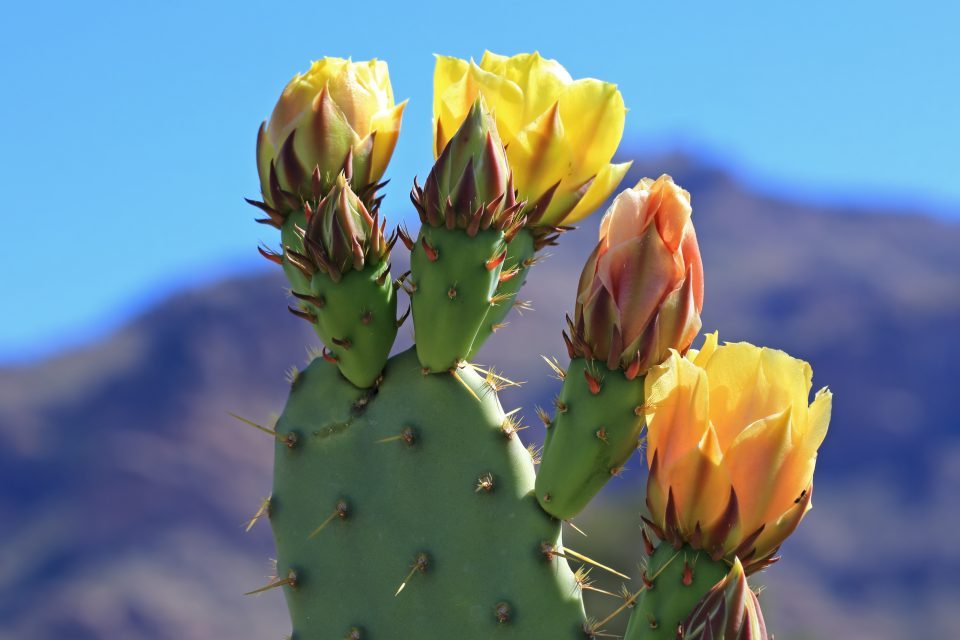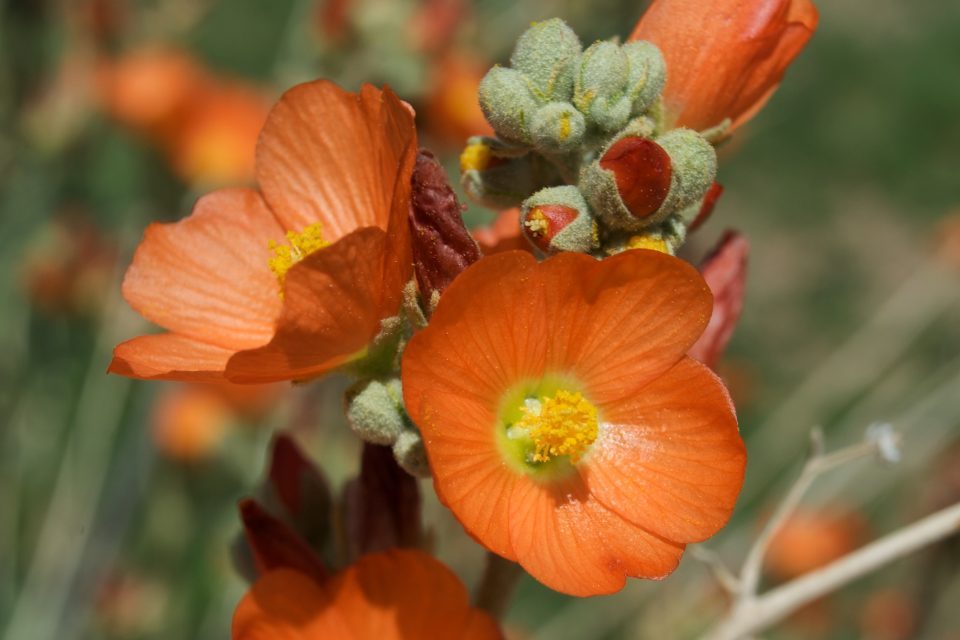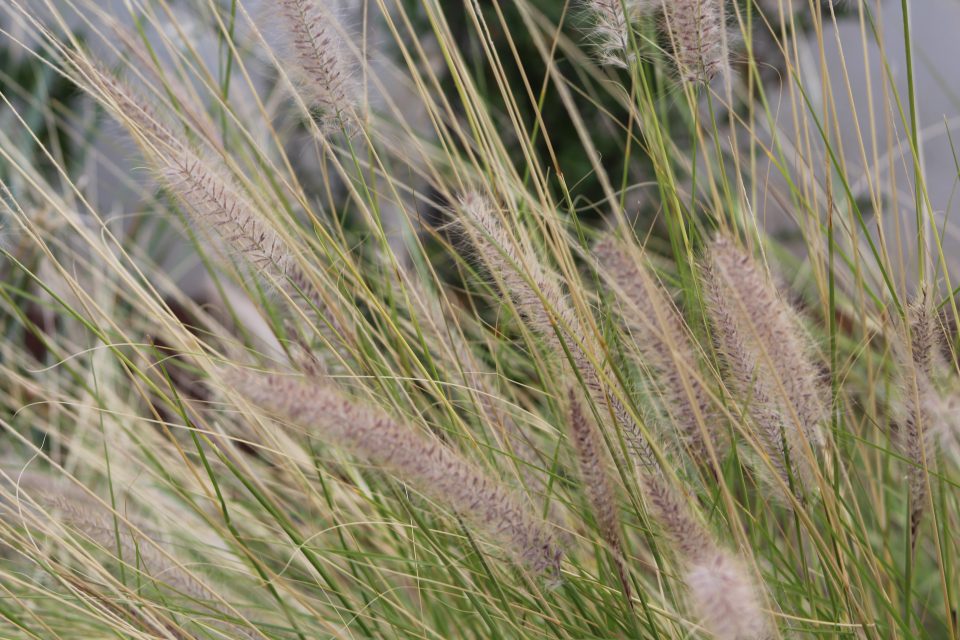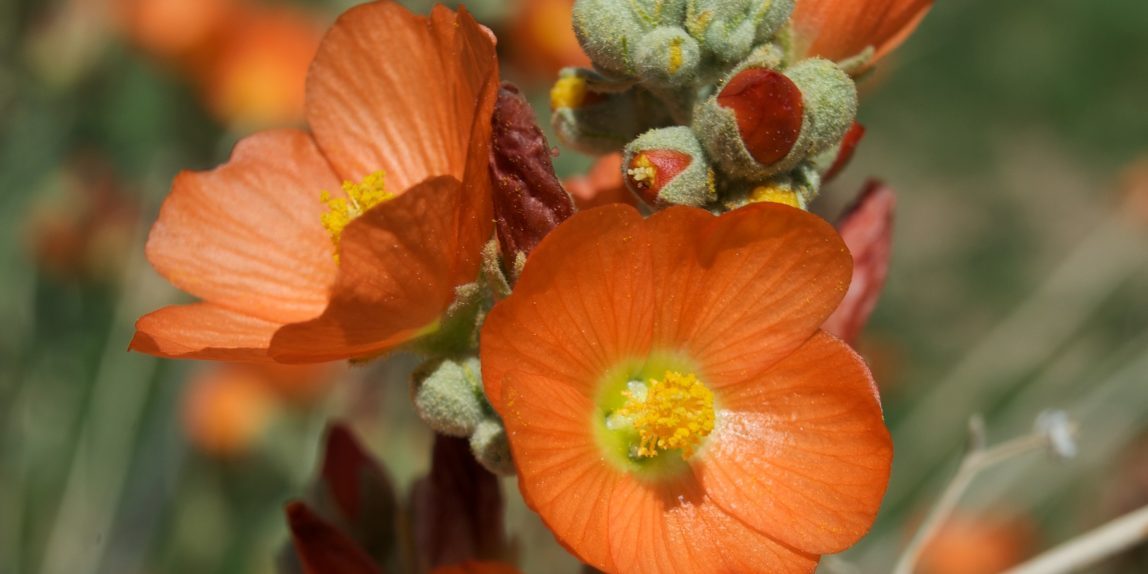Since the federal government declared a water shortage on the Colorado River, Southern Nevada’s water supply has been reduced, making it more important than ever to conserve our water. Additionally, our water supply predicament is further affected by the increasing desert temperatures and decreasing amounts of rainfall.
Landscape irrigation is one of the largest categories of water consumption, so it is a great place to begin conserving water. When talking about desert landscape, the first thing that comes to mind for many people is a landscape full of dirt and rock; however, the Southwest desert is home to many beautiful plant species that thrive in a desert environment and require little water consumption.
If you look at the undeveloped desert around us, especially areas such as Red Rock Canyon, Valley of Fire, or Death Valley, you will find many attractive desert native plants that thrive with only the care of Mother Nature. When taking a closer look, you’ll find a few factors that allow these native plants to thrive.

To begin, let’s examine cactus and succulent varieties that are native to the Southwest desert area such as the Hedgehog, Beavertail, Prickly Pear, and Cholla cactus varieties, as well as many agave and yucca varieties. In their native environment, these plants receive water infrequently and can store water in their leaves and stems for long periods of time. Due to infrequent watering, their roots have evolved to become ‘pumps’ that activate when water is available. Once the roots receive water, they will activate and pump water to the leaves and stems to store for future use. Furthermore, these plants have a thick, waxy outer skin that can reflect the heat of the sun and helps to prevent moisture loss.
As a result of this natural process, desert native cactus, agave, and yucca should not be watered frequently when placed in a landscape. If the roots have too much moisture around them, the leaves and stems will run out of storage room, causing the roots to rot and the plant to die. Because these plants require minimal water, they are a wonderful solution to keeping your landscape beautiful and water conservation low. In fact, cactus, agave, and yucca will produce some of the most colorful flowers you can find in the desert!

Other than cactus and succulents, there are many desert native perennials, shrubs, and trees that can make your yard beautiful without requiring too much water. If you’re looking to add hardy, colorful perennials to your landscape, consider plants such as the Desert Marigold, Desert Daisy, Globe Mallow, Desert Paintbrush, Indigo Bush, Apache Plume, and Red Bird of Paradise. Examples of great native shrubs include the Brittlebush, Turpentine Bush, and Creosote, while excellent native trees include varieties of Mesquite, Palo Verde, and Desert Willow.
When looking closely at these plants, you’ll notice that they all have small leaves in common! Smaller leaves can tolerate sun much better than large leaves because their small surface area helps to prevent sunburn. Additionally, they require less water storage to sufficiently cool off the leaf, meaning the entire plant does not require as much water as sub-tropical plants. Lessened water requirements make small-leaf plants excellent choices for water conservation.

A few more plants that are excellent for water conservation include those in the grass and ground cover families! For example, grasses varieties such as Deer Grass, Regal Mist Grass, and Japanese Feather Grass are considered low-water-use plants. Further, there are great ground covers that are drought tolerant such as the Ice Plant, Australian Racer, and Gopher Plant.
To conserve your water usage, you do not have to sacrifice having a beautiful yard! There are plenty of beautiful desert native plants that can add greenery and color to your landscape. By adding native plants, you will be saving on money, water, and maintenance! For more native plant recommendations, speak with a member of our sales team at the Star Nursery location nearest to you!
